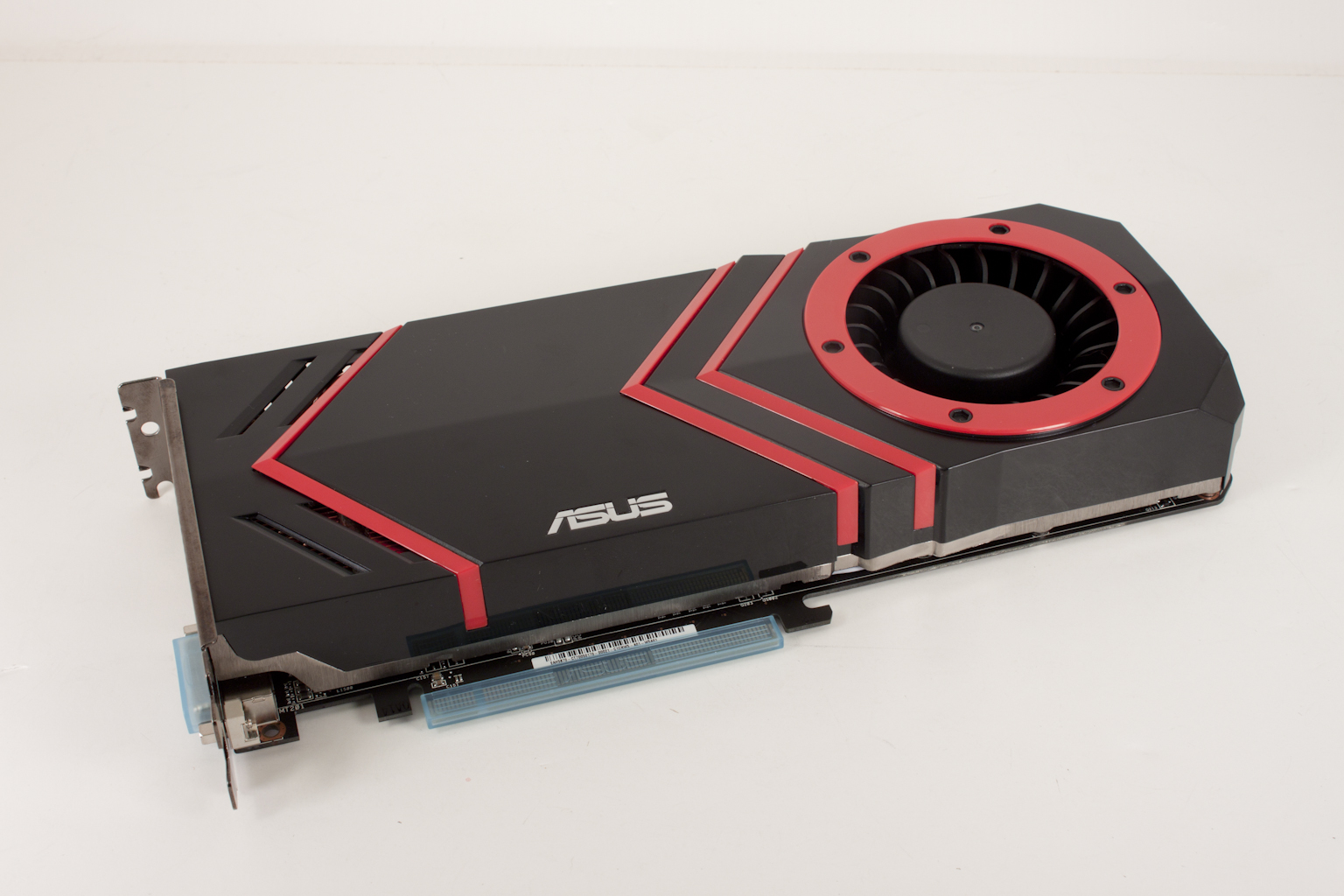Real-World Gaming -
As we mentioned above we use both synthetic and real-world testing to give you the full picture of any product. For GPUs the best real world test is in-game testing. Time Demos and benchmarking tools with render engines cannot come close to showing what a graphics card can really do once it is in you system. As such we have chosen five games two DX9, two DX10 and two DX11. These games are Metro 2033, Just Cause 2, Bioshock 2, Battlefield Bad Company 2, FarCry2, and Modern Warfare 2. We played a specific level of each of these and used FRAPS 3.0.3 to measure the ability of our test subjects to render each game. All of the charts below are sorted based on the minimum frames per second each card was able to achieve. We have also pulled out the DX10 based GTX 285 from all of the DX11 games.
Modern Warfare 2 (DX9) -
The final sequel is Call of Duty Modern Warfare 2. This game brings the stress and chaos of modern combat to life. It is a very short but very intense game, in it you take on multiple roles as you move through different locations around the globe and engage in all forms of combat. For testing I ran from after you are selected until the liberation of the school. Settings are shown below.
Modern Warfare 2 is not the most demanding of games. It is arguably a popular title though. If Modern Warfare 2 is your thing you will be very happy to note that the EAH5870 Stalker will not slow you down at all. At the factory speed it is just 6 FPS behind the GTX 480 and when we clocked it to 1GHz it is out in front by 5 FPS.
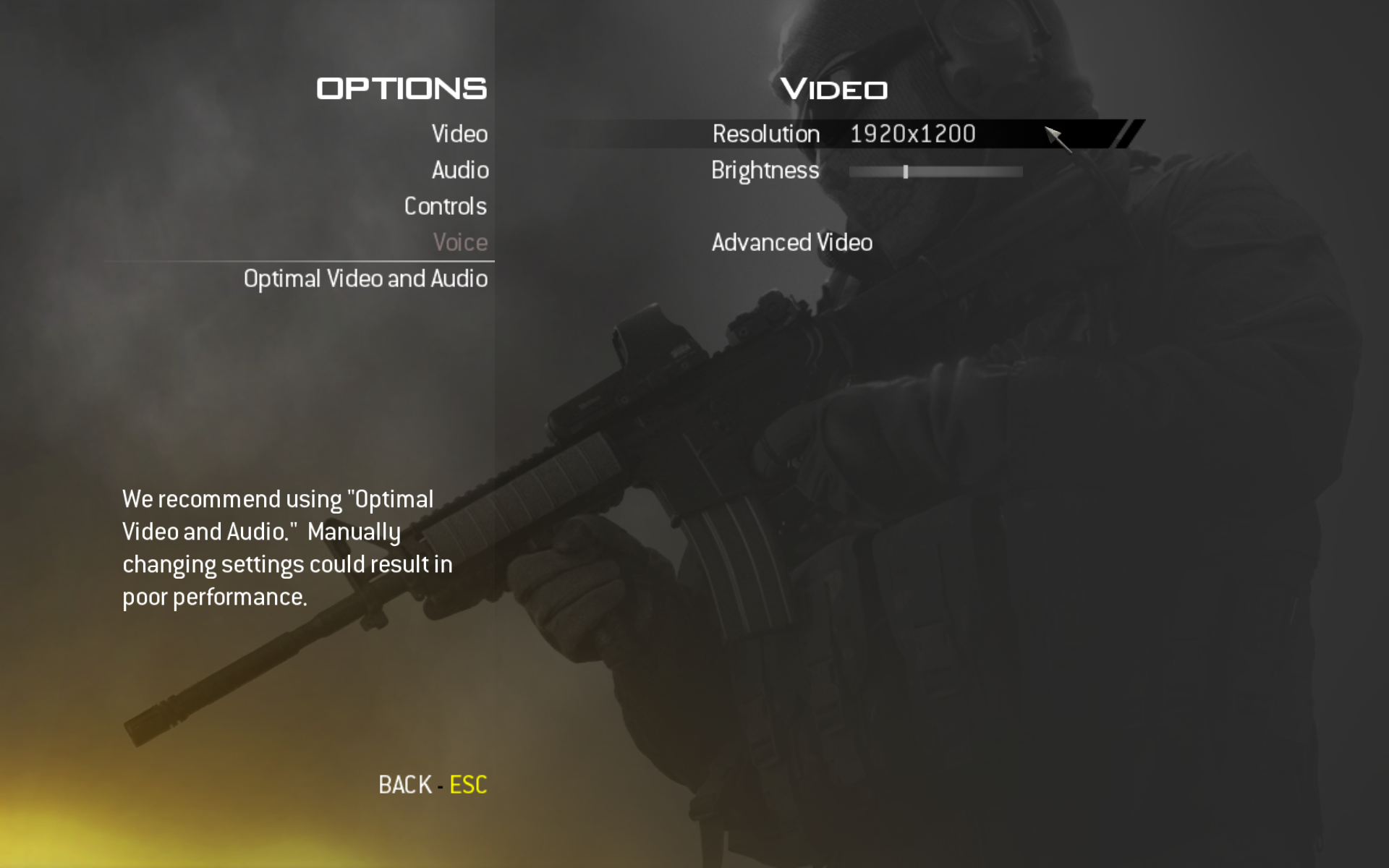 |
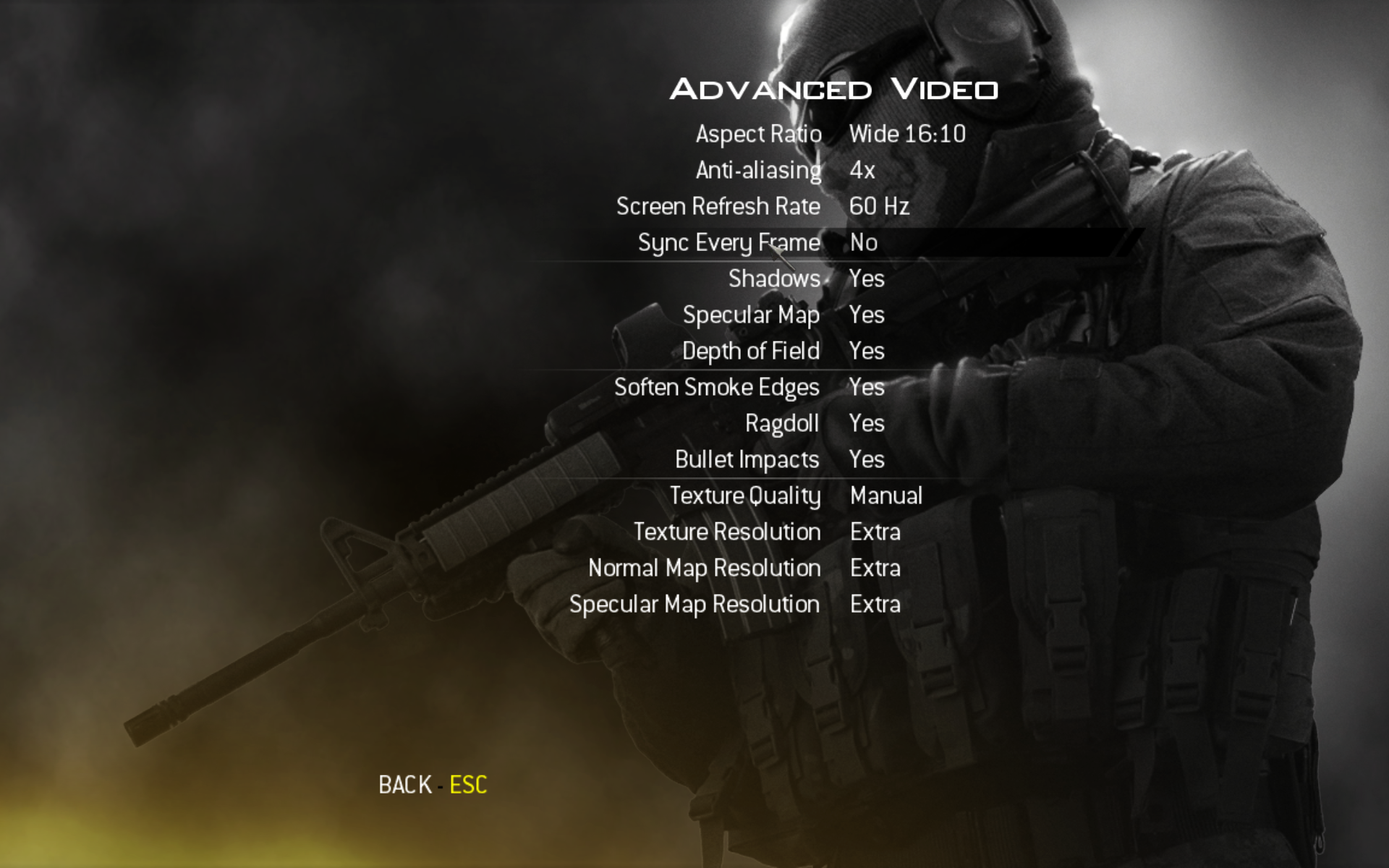 |
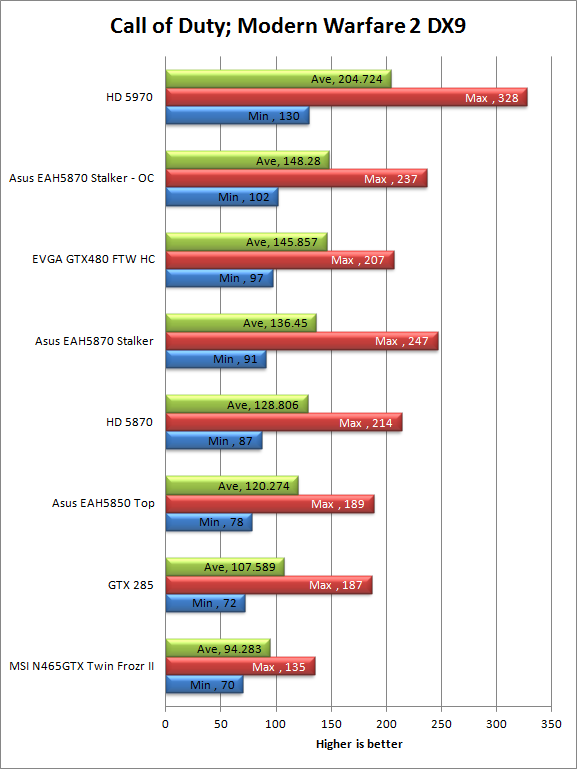
Battlefield Bad Company 2 (DX11) -
Another game in the BF franchise this one takes a stab at a more modern form of warfare. You do start off toward the end of WWII but soon are in the future (present?) for the single player campaign. The game features some decent AI (more mob style than anything) and has some great weapons. Our test run is the entire first mission. Settings are shown below.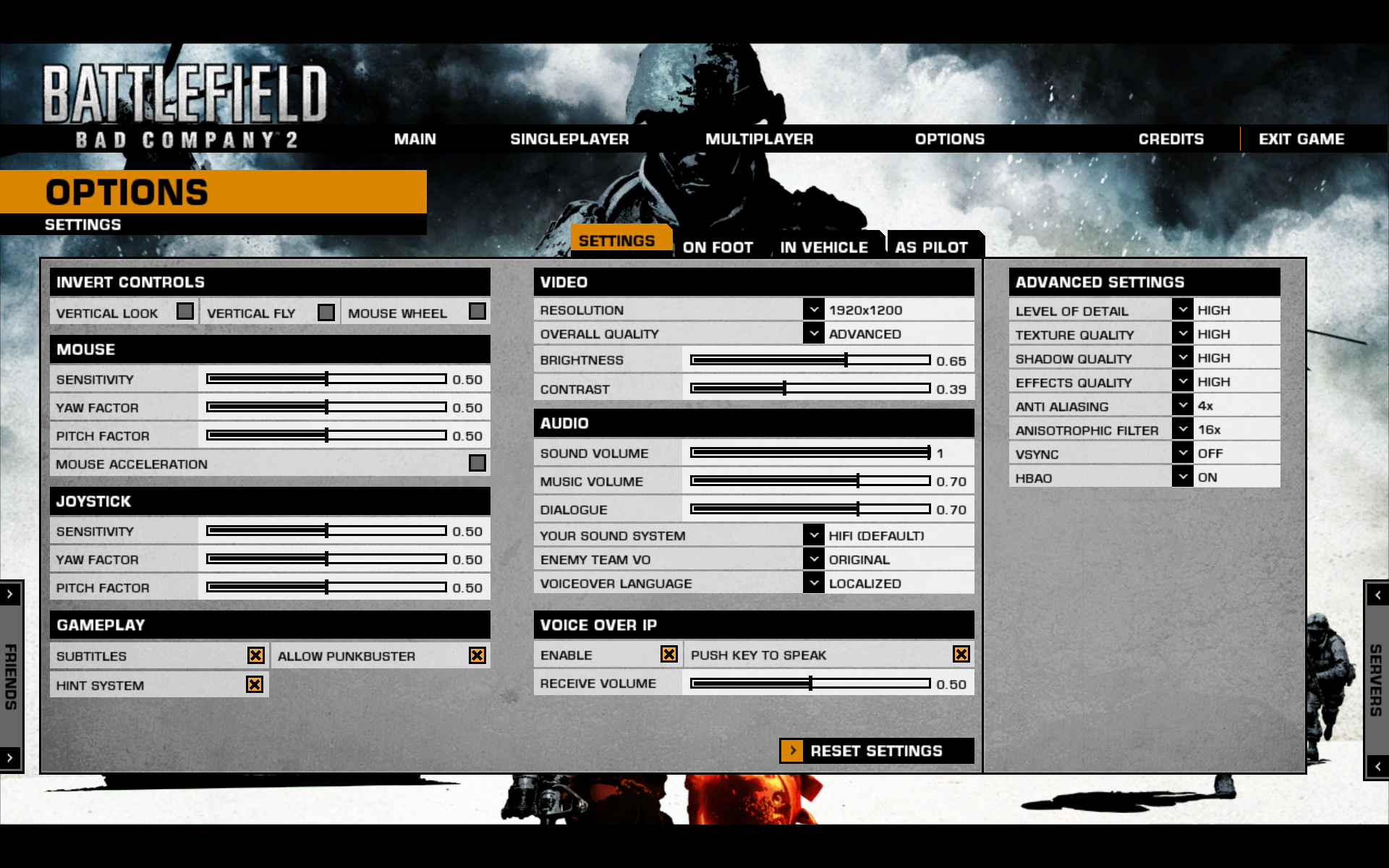
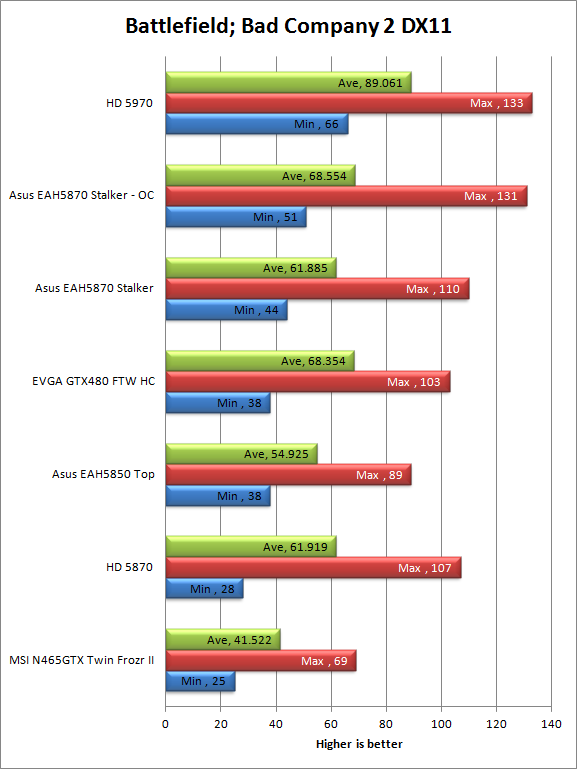
For the DX11 game Bad Company 2 the EAH5870 remove some of the doubts we had about DX11 gaming on this card. It has no problem at all. It is 6 FPS ahead of the GTX 480 at its factory speed while overclocking it to 1GHz gives us an extra 7 FPS to play with.
FarCry2 (DX10) -
Farcry 2 is the third of the sequels we used for testing. It is a large sandbox game that does not truly have levels like most first person shooters. For testing I played from after you wake up until you free the hostage. Settings are shown below.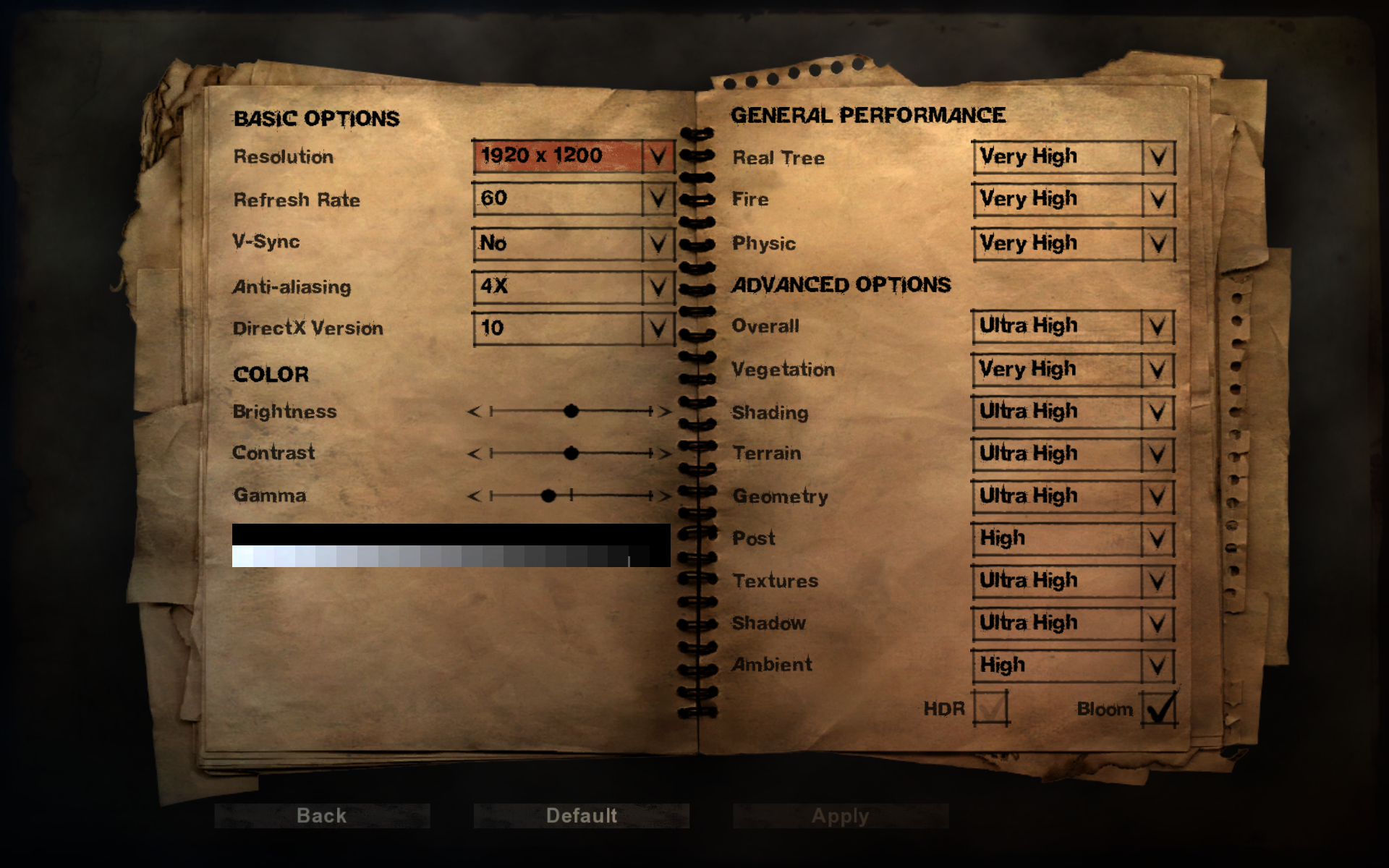
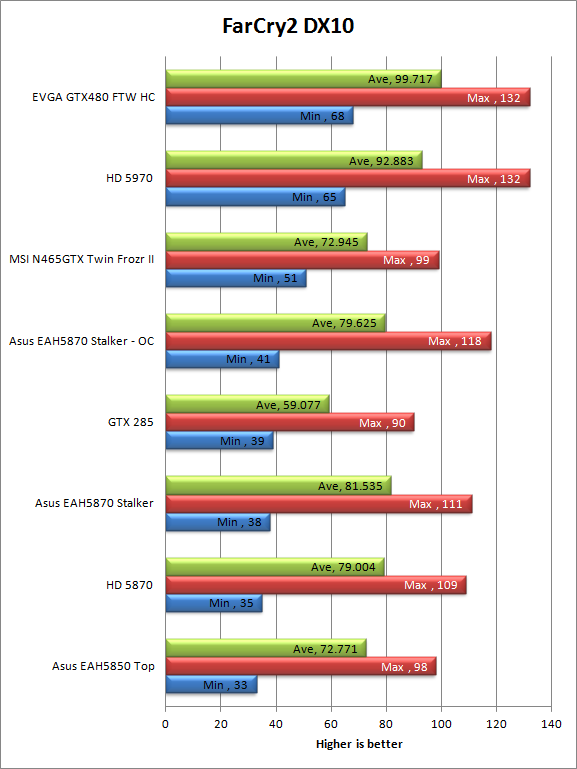
Although the differences here are very small you get the feeling that this is an nVidia game. To see the overclocked HD 5870 out run by the GTX 465 was something of a shock. Even if the differences are very small, we can see that this might not be the most honest test of these GPUs.
Bioshock 2 (DX10) -
Another sequel shows up in our testing, this one pits you in an undersea utopia gone horribly wrong. The engine is based off of the Unreal engine and offers us some DX10 surfaces to help increase the rendering load. For testing I ran the level from the beginning of the game until you find Dr Tenenbaum. Settings are shown below.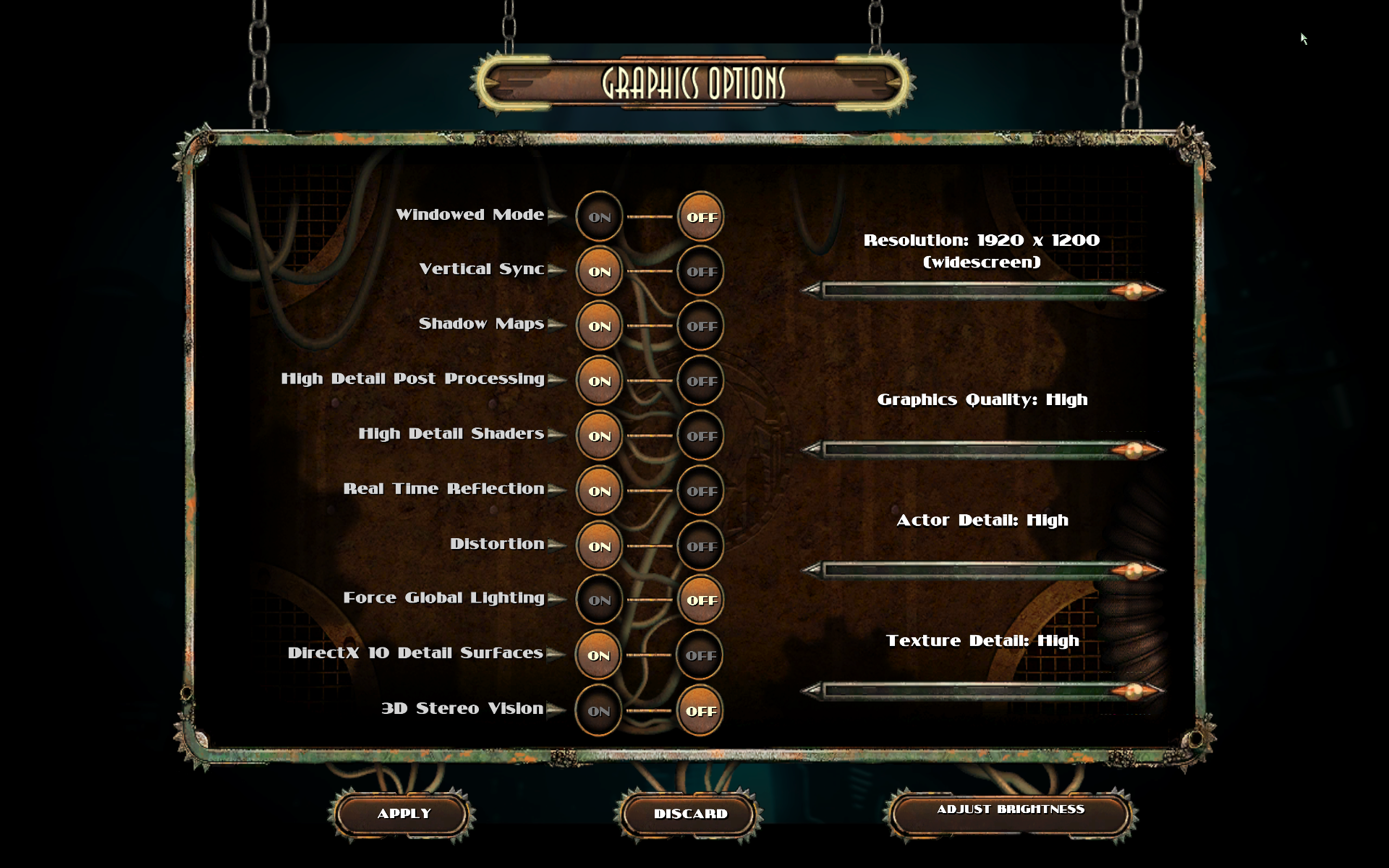
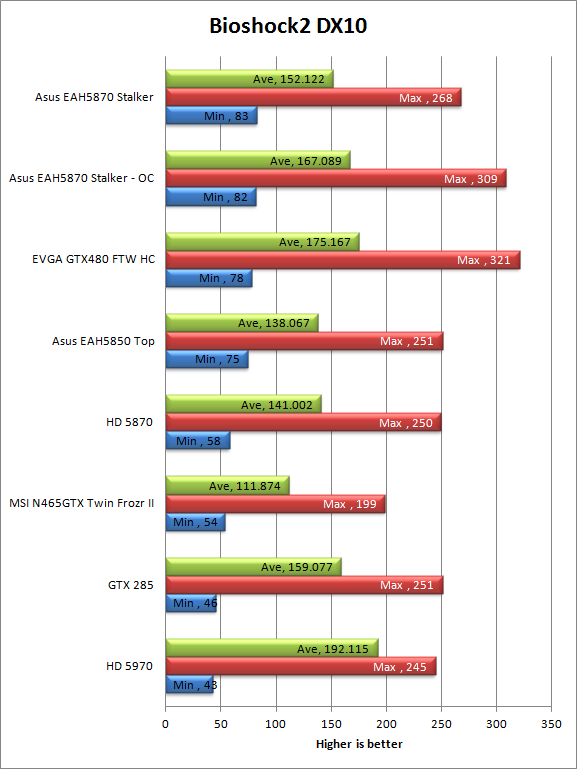
We see a reversal of the FarCry scores here with the EAH5870 out on top. The margin of victory? why it is a mere 4 FPS over the GTX 480 and 1 FPS between the factory run and the overclocked run. So we can call a winner here, but as we like to say, you would never know it if you saw it.
Metro 2033 (DX11) -
Metro 2033 is another in the post-apocalyptic genre. This one takes place in the year 2033 20 years after a terrible event took place that almost wiped out mankind. The survivors took refuge in metro stations in Moscow. Now you must venture out to prevent the death of the few remaining people left. T The game itself plays a lot like Stalker; it is slow and filled with mutated horrors (*note 4A games, was founded by developers that worked on the X-Ray Engine used in STALKER.). For our testing we played for 30 minutes starting with your exit from the station. Settings are shown below.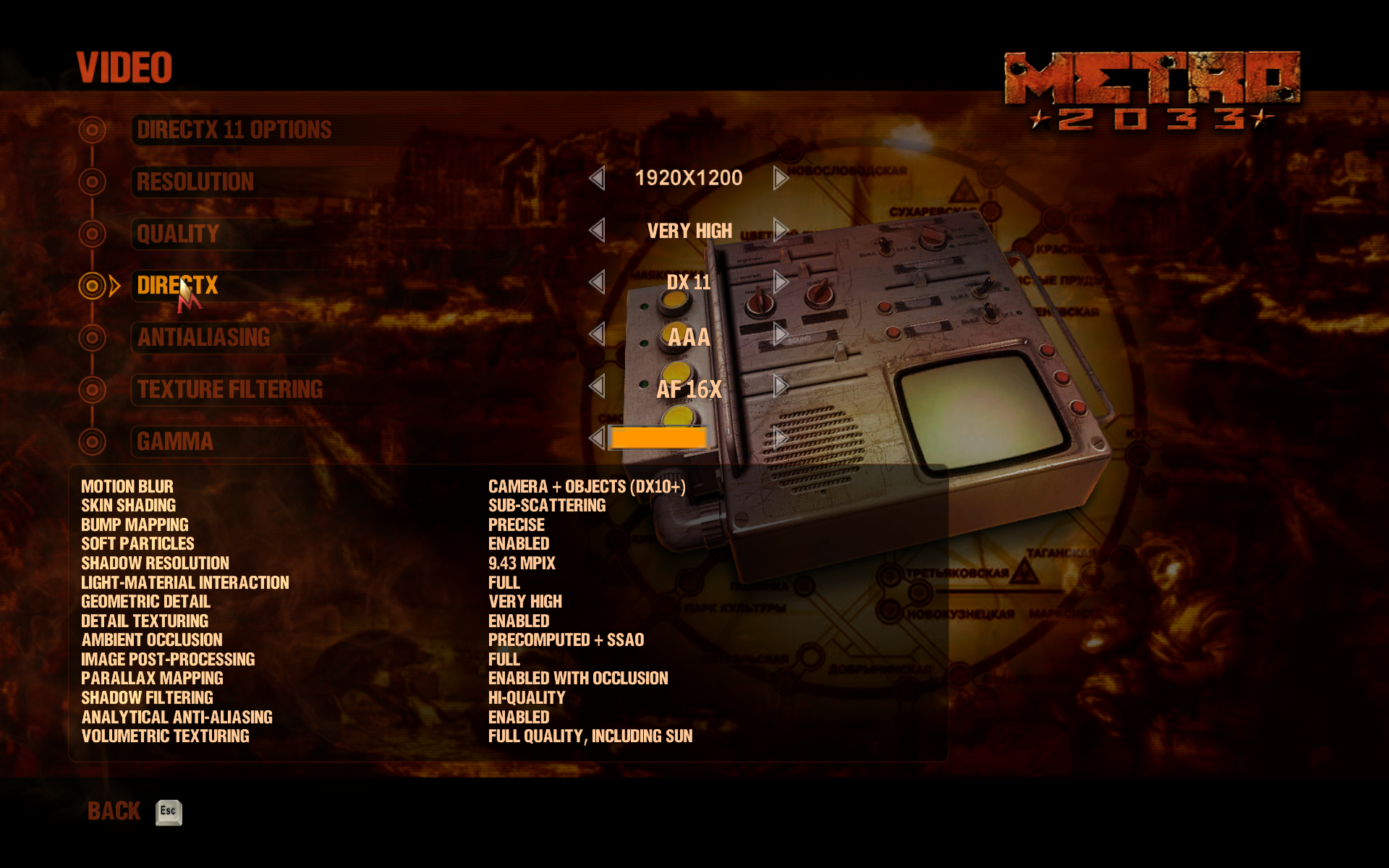
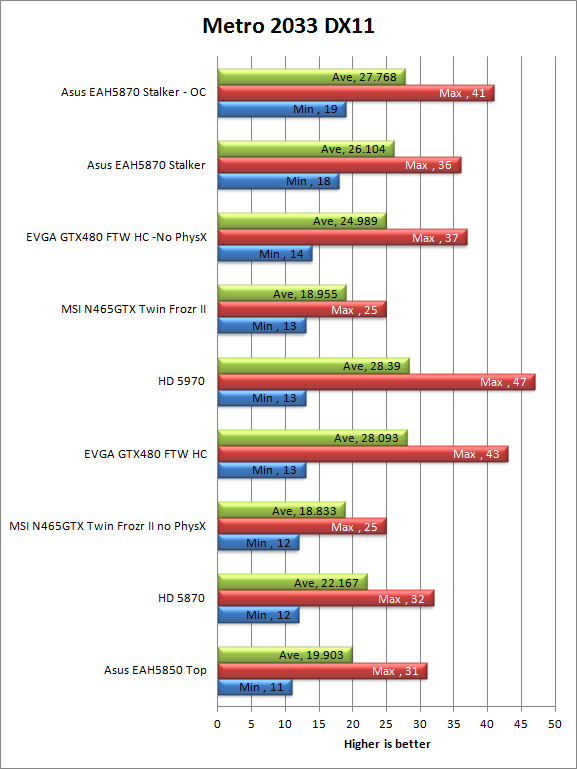
Ah, and we were worried about having performance issues with the EAH5870 and Stalker. Although the engine is not identical to Stalker it is close so the performance we see here gives us a decent indication of what you would see when playing the actual game S.T.A.L.K.E.R. COP. We do have to warn you that the deltas here are very slight.
Just Cause 2 (DX9) -
This one is plain cheesy, but is a decent one for third person action. It is also a DX9 console port. The game put you as a CIA operative looking to regain some lost data cards and destroying everything in your path. The graphics are ok, but the AI and general story are terrible.
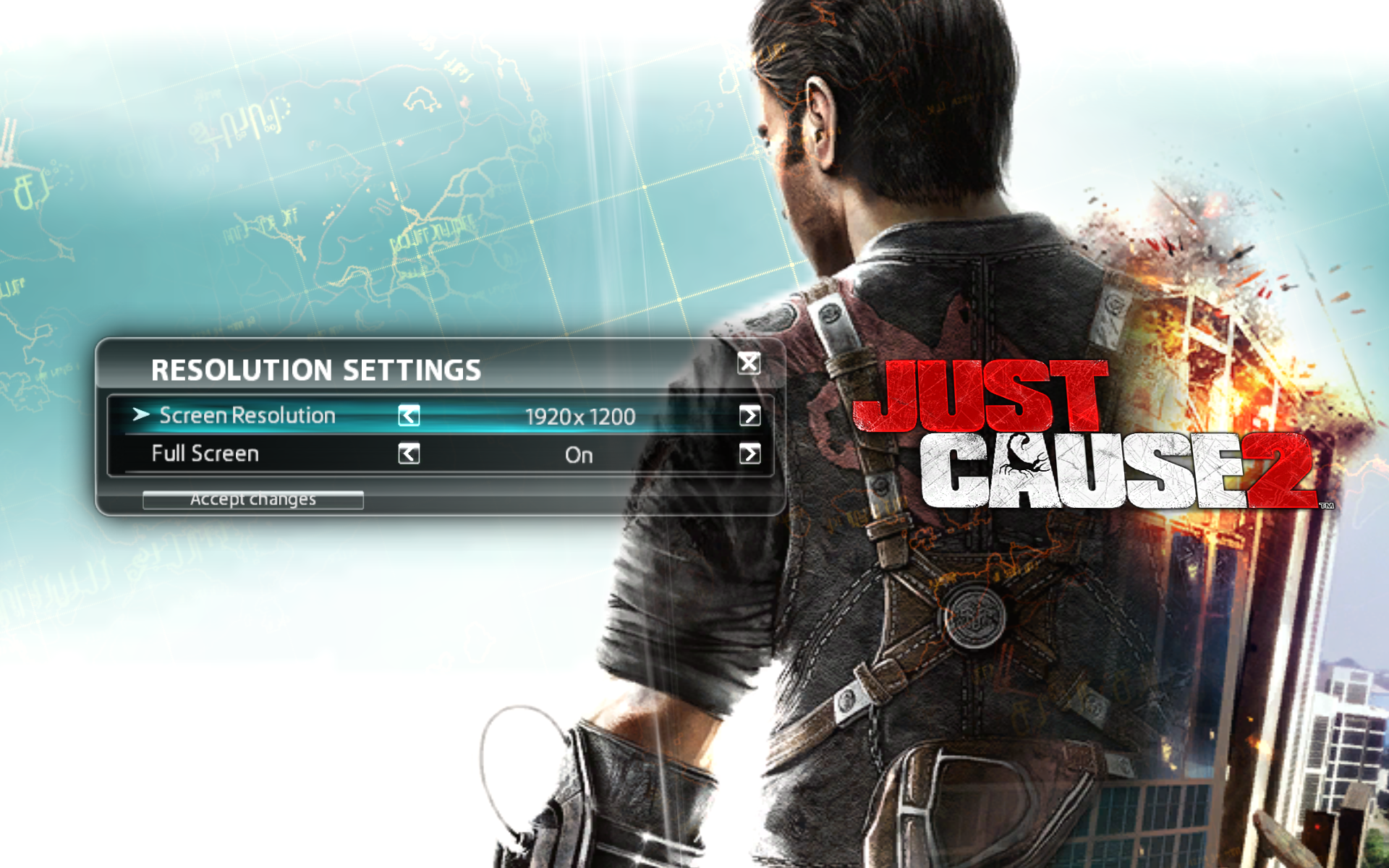 |
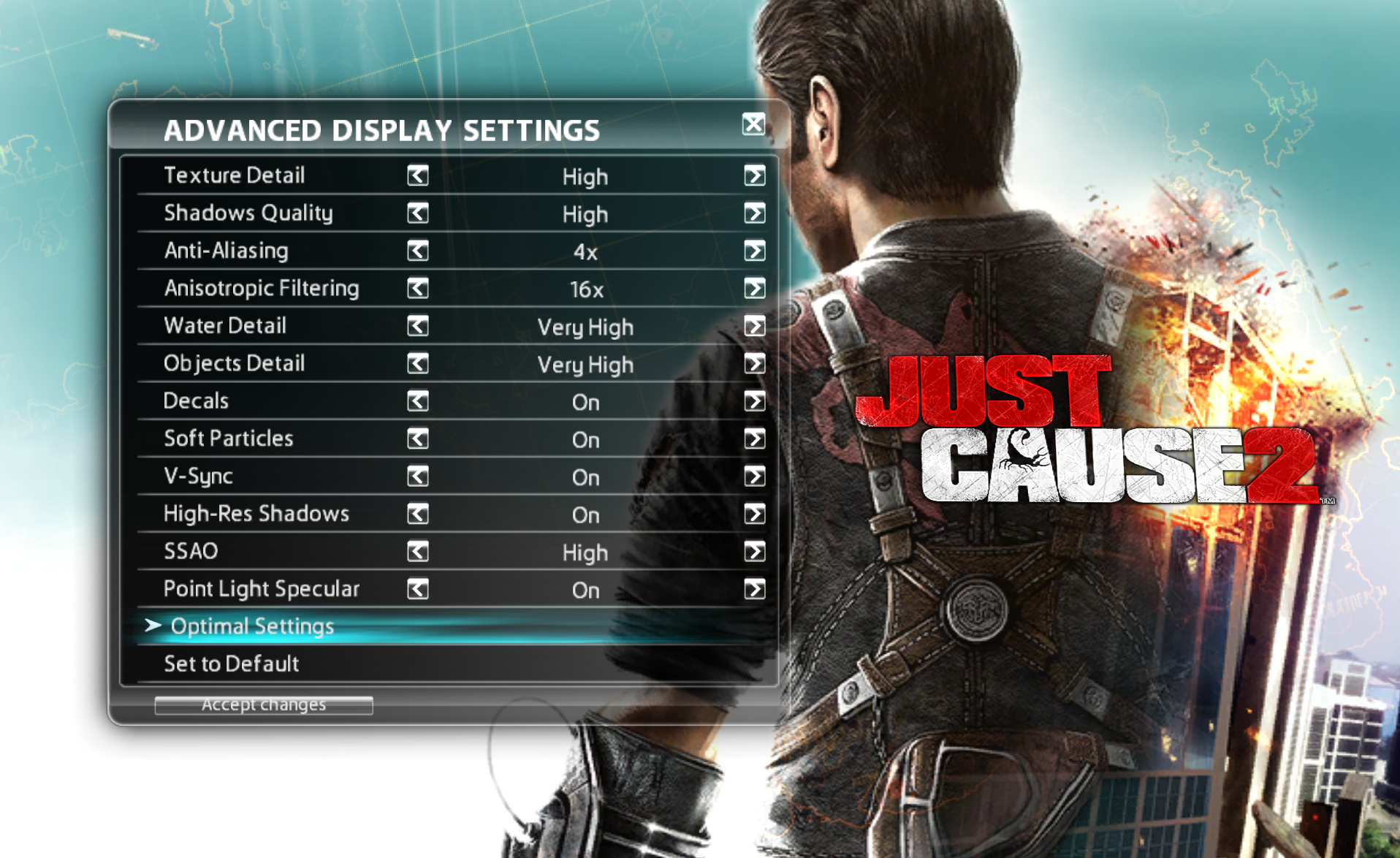 |
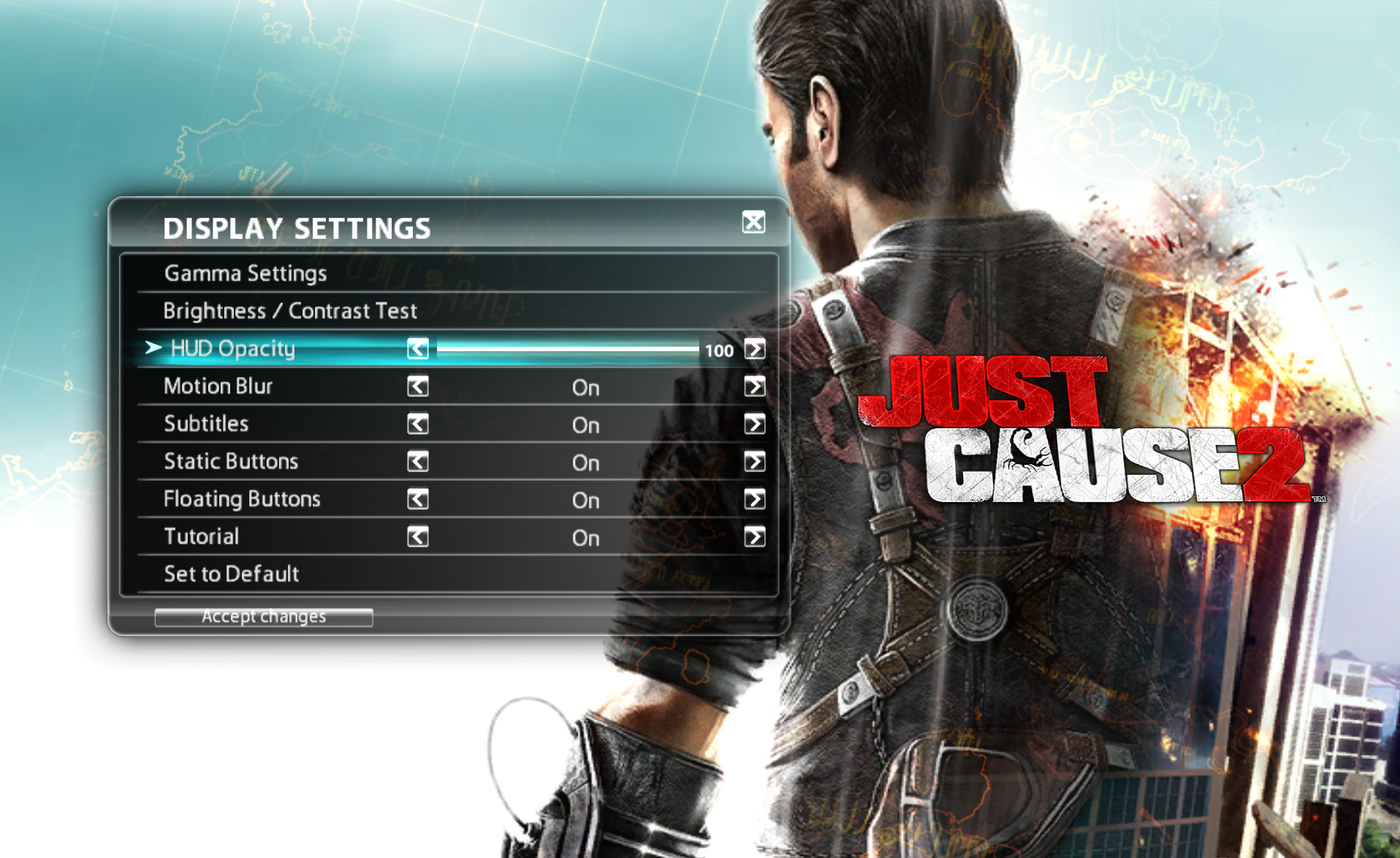
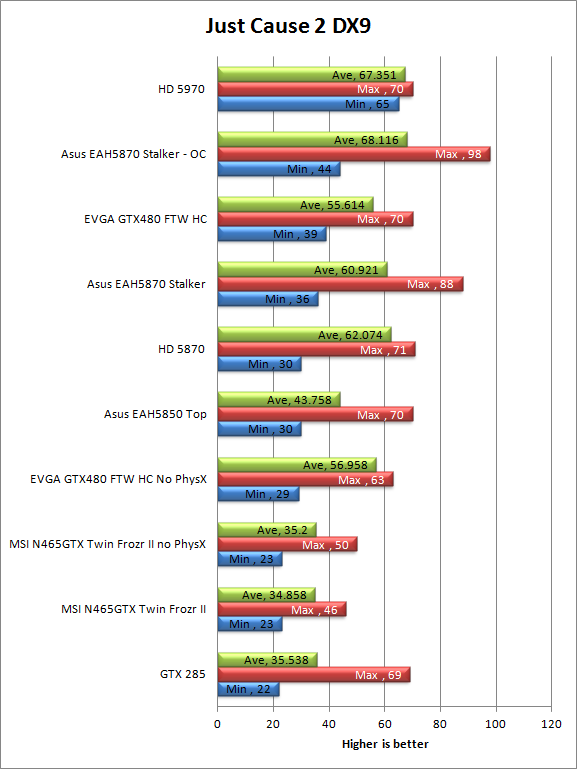
For Just Cause 2 the EAH5870 comes in 3 FPS behind the GTX 480 from eVGA. Overclocked to 1GHz it pushes past by 5. Again these numbers are very small by comparison. It is also worth mentioning that they EAH 5870 had a much better average frame rate than the GTX 480.
Gaming Conclusions -
With the EAH5870 Stalker COP we saw pretty much what we expected. This is a fast GPU to begin with and kicking it up a few MHz did not hurt it either. You are going to get some good gaming out of this card that s for sure. The one thing that still puzzles us if the FarCry2 performance; this is something that we will certainly be looking into and may require replacing that game as a test. After all if the game engine is that optimized for nVidia it is not an accurate test of either GPU maker’s products. On the subject of “in-game” noise and image quality we have a little bit of bad news. The fan on the EAH5870 stalker can get loud. Due to the squirrel cage design it has some very high pitched harmonics once it gets going. Fortunately for you, you can use the SmartDoctor software to adjust the fan. We highly recommend using the SmartFan settings to hard set the temperature thresholds that ramp up the fan. This will help keep the noise at bay to a certain extent. For image quality in game; it is a combination of ATi and Asus Splendid. Between those two you do get some vibrant colors and clean graphics. You won’t be disappointed.

